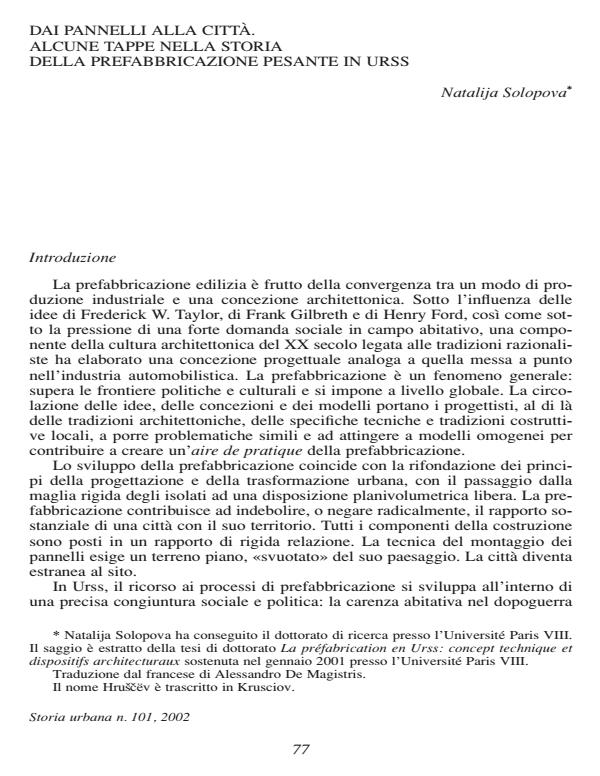Dai pannelli alla città. Alcune tappe nella storia della prefabbricazione pesante in URSS
Titolo Rivista STORIA URBANA
Autori/Curatori Natalija Solopova
Anno di pubblicazione 2003 Fascicolo 2002/101 Lingua Italiano
Numero pagine 30 P. Dimensione file 713 KB
DOI
Il DOI è il codice a barre della proprietà intellettuale: per saperne di più
clicca qui
Qui sotto puoi vedere in anteprima la prima pagina di questo articolo.
Se questo articolo ti interessa, lo puoi acquistare (e scaricare in formato pdf) seguendo le facili indicazioni per acquistare il download credit. Acquista Download Credits per scaricare questo Articolo in formato PDF

FrancoAngeli è membro della Publishers International Linking Association, Inc (PILA)associazione indipendente e non profit per facilitare (attraverso i servizi tecnologici implementati da CrossRef.org) l’accesso degli studiosi ai contenuti digitali nelle pubblicazioni professionali e scientifiche
In the Soviet Union, the development of prefabricated buildings seems to have been a discontinuous process. During the 1920’s the industrialization of the nation, the spread of works by Taylor and Ford, and the presence of foreign technicians opened the debate on prefabrication. During this phase, constructions using large cement blocks and lighter wooden prefabricates were experimented. During the 1930’s the «academic» trends in Soviet architecture clashed with concepts of prefabrication, but not in a particularly radical fashion: technical innovations and theoretical research conserved the objective of prefabrication. The sum of the destruction caused by the Second World War gave rise to the development of industrial methods of reconstruction that were, however, impeded by the formal aspects, as demonstrated by the debate concerning the «visible» joints between prefabricated panels. With Stalin’s death and Nikita Kruschev’s rise to power (1953), the prefabricated buildings were envisioned as a method of solving the extensive housing crisis. For this reason it was explicitly included in the political program of the new party leader. This phase constitutes the second short-term trend in the history of Soviet prefabrication.;
Natalija Solopova, Dai pannelli alla città. Alcune tappe nella storia della prefabbricazione pesante in URSS in "STORIA URBANA " 101/2002, pp , DOI: